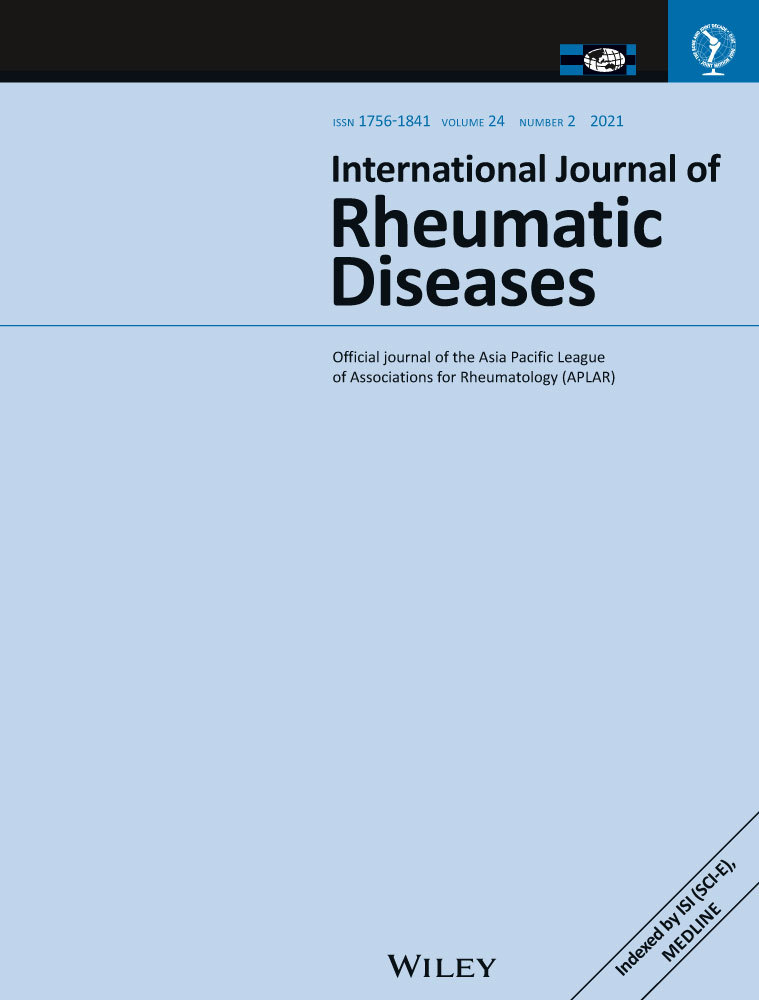C-reactive protein concentrations as predictors of glucocorticoid-free remission in patients with polymyalgia rheumatica
Dear Editor,
I have read with great interest Hattori et al.’s article, recently published in the International Journal of Rheumatic Diseases.1
Conflicting results have been reported in published literature on the usefulness of C-reactive protein (CRP) concentrations and erythrocyte sedimentation rate (ESR) as predictors of glucocorticoid (GC)-free remission in patients affected with polymyalgia rheumatica (PMR). For instance, some researchers reported that normal values of CRP at 6 months (but not at 1 month) from baseline were independently associated with complete remission of PMR at 12 months in a multivariate analysis.2 In Hattori's retrospective study, instead, the achievement of CRP concentrations < 0.17 mg/dL at 1 month from baseline was associated – when compared to CRP concentrations > 0.17 – with a higher probability, at 30 months, of GC-free remission. CRP was considered normal if < 0.3 mg/dL. ESR was not instead a predictive variable.1
In a bi-centric, retrospective case-series study published in 2019, among 460 PMR patients, we identified 7 with normal values of both ESR and CRP concentrations at the time of diagnosis. Diagnosis of PMR was confirmed during follow-up lasting from 29 to 120 months.3 In 6 of these 7 patients, we diagnosed a relapse of PMR according to the modified PMR-Activity Score proposed by Devauchelle-Pensac et al.4 Proportion of GC-free remission at 29 months from the initiation of GC treatment in the group of patients with normal baseline values of ESR and CRP was not statistically different when compared to patients with raised baseline ESR and CRP (unpublished data).
More recently, among 454 patients affected with PMR, Marsman et al. identified 62 with normal baseline values of both ESR and CRP. The number of patients with relapse of PMR and the proportion of GC-free remission during 24 months follow-up were not significantly different in patients with baseline normal versus baseline elevated ESR and CRP.5
It is worth highlighting that all patients enrolled in Marsman et al.'s and in our study followed a uniform treatment protocol in line with the recommendations for the management of PMR proposed in 2015 by a European League Against Rheumatism / American College of Rheumatology collaborative initiative,6 and received 12.5-20 mg/d prednisolone as the initial dose. Despite a different methodological approach,7 both studies highlight that PMR without baseline increase of both ESR and CRP exists, and that CRP values have no significance as predictor of GC-free remission.
In conclusion, according to these brief remarks, CRP baseline values seemed not to have always the significance of predictor of GC-free remission in patients with PMR treated with prednisolone. Moreover, the CRP normalization timing proposed by Hattori et al. diverges from the same timing suggested by another research group.2
I agree with Hattori et al. that a prospective study with a well-defined protocol would be very useful.
CONFLICT OF INTEREST
The author declares no conflict of interest.




